By Dan Weisz
Just over a week ago I sent you photos of a Lesser Nighthawk and its chick when the chick was three to four days old and when it was a week or so old. The birds live just outside the backyard wall of a friend who allowed me to return to observe the birds a few times. I felt very fortunate and was grateful to take advantage of this opportunity and to be able to continue to both observe and take pictures of these birds over time.
Two days after my last observation I returned again. By then, the chick looked different with developing wing feathers and it was much more active. We spotted it resting several feet from its mother. Eventually it woke up and began walking towards its mother. Besides the wing feathers, check out the one crazy ‘round’ feather right on the top of its head!
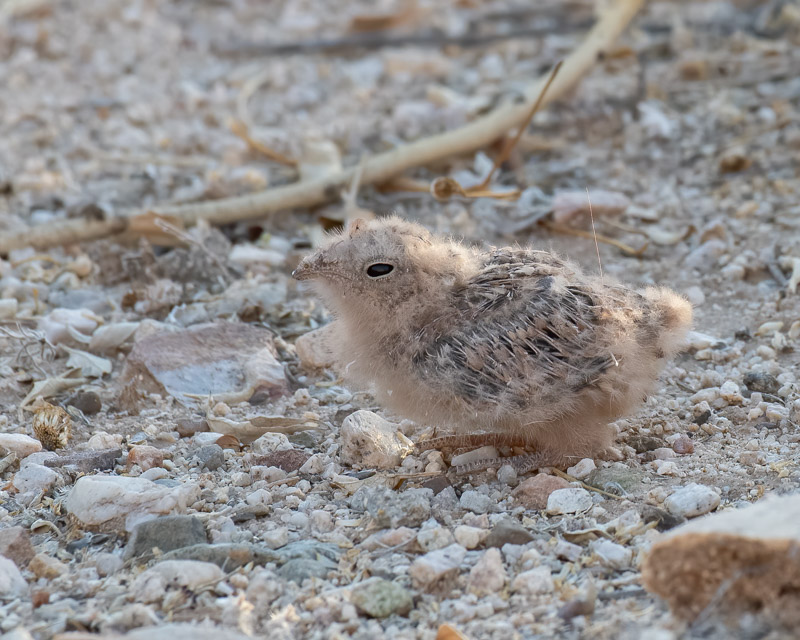
Mom was alert and waiting for her chick to return.
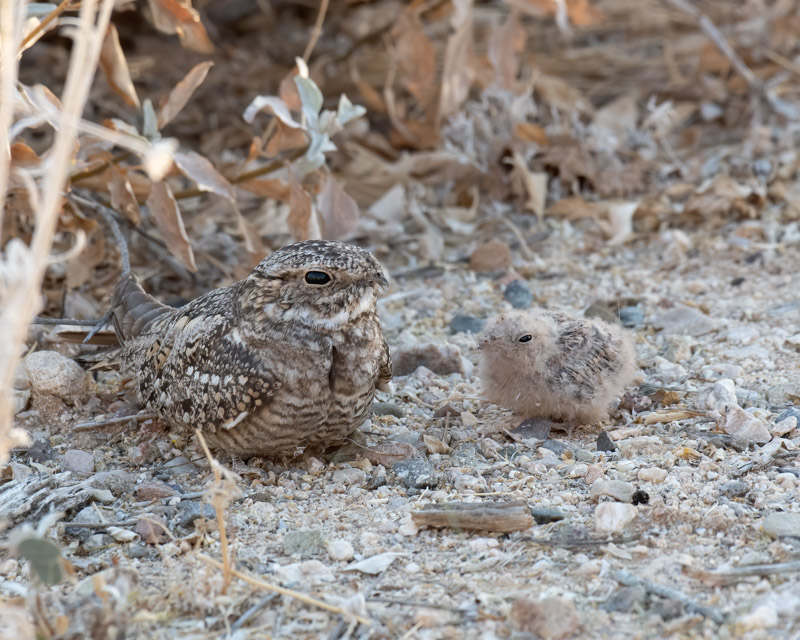
Lesser Nighthawks find food by swirling through the air at sunset and into the night. They fly with their large mouths wide open, scooping up whatever insects are in their way. Here, the little chick was just yawning, but you can see how HUGE its mouth is. These birds have very tiny beaks but very large mouths. And the brood patch on the mom is still clearly visible.
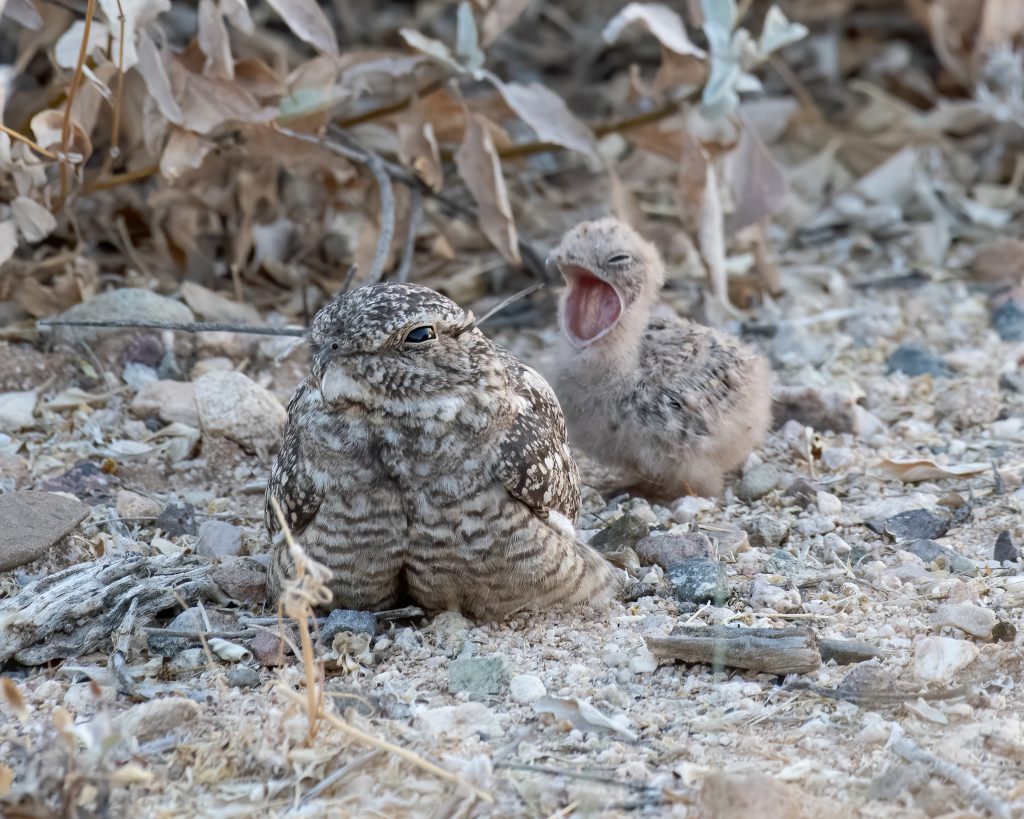
The two birds shuffled away every 15-20 minutes. The mom sort of waddled side-to-side as she walked, and she cradled the baby between her legs much of the time as she moved.
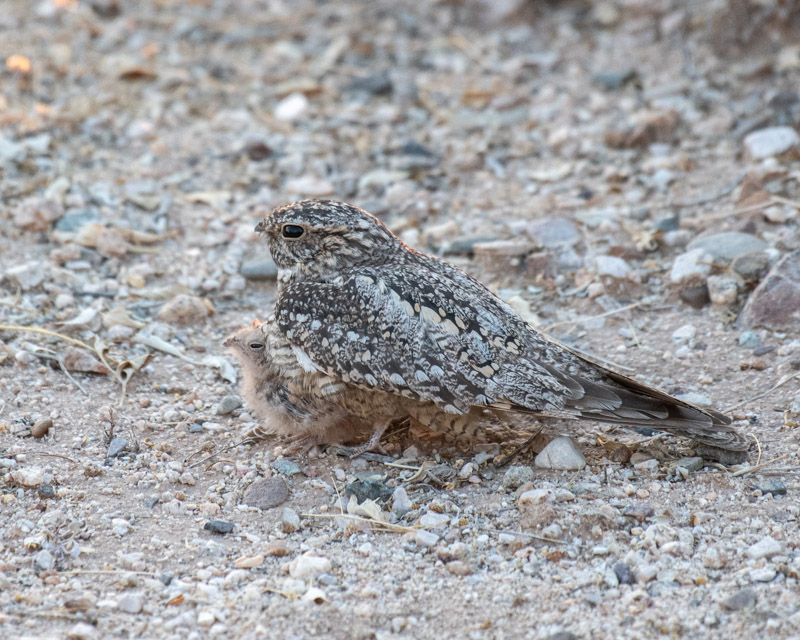
Once they settled down, the little one tossed and turned. You can see the profile of the adult Lesser Nighthawk’s very tiny beak.
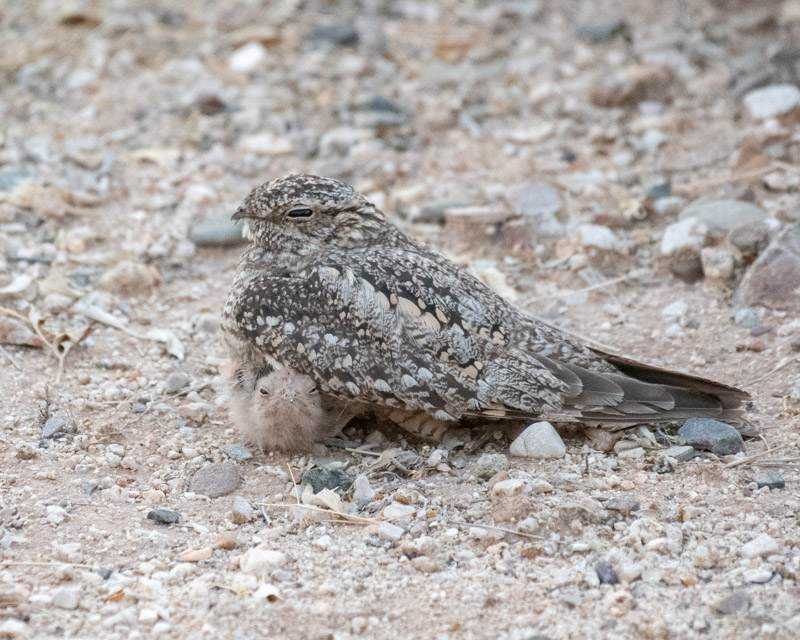
The sun set, changing the light for the remaining photos and giving them a more reddish/orange look. Here, the young bird is stretching its right wing while its eyes remain closed.
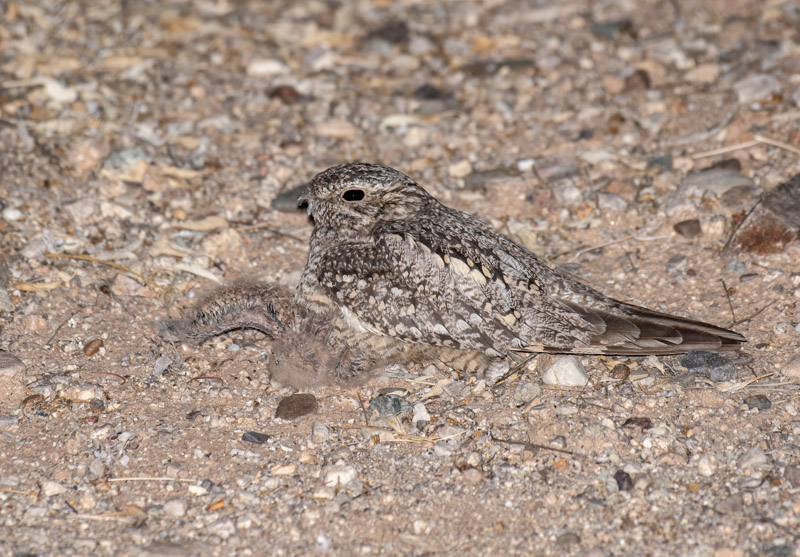
And now the baby shifted and its left wing stretches out.
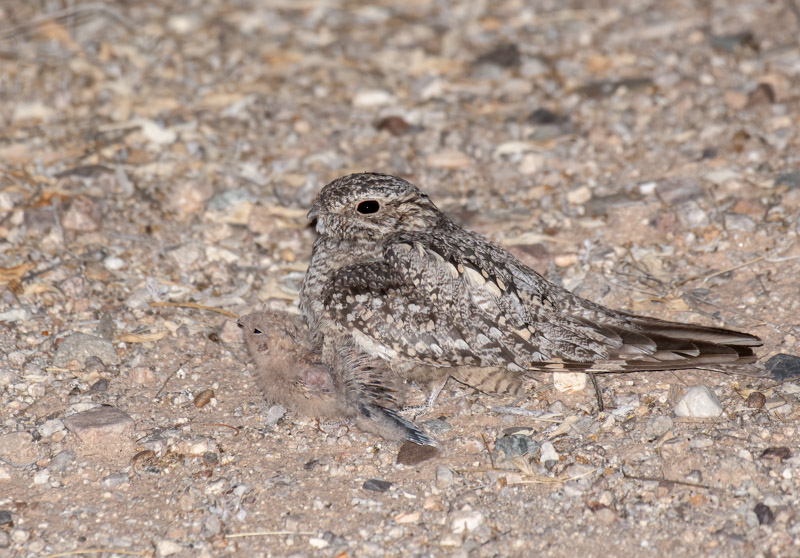
Mom moved again, leaving the chick behind. The chick quickly followed.
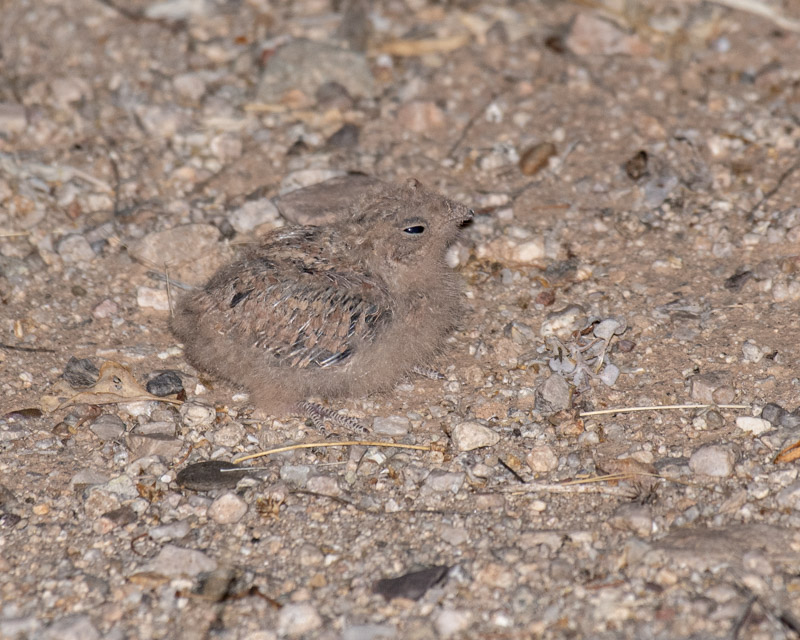
Baby and mother Lesser Nighthawk check in.
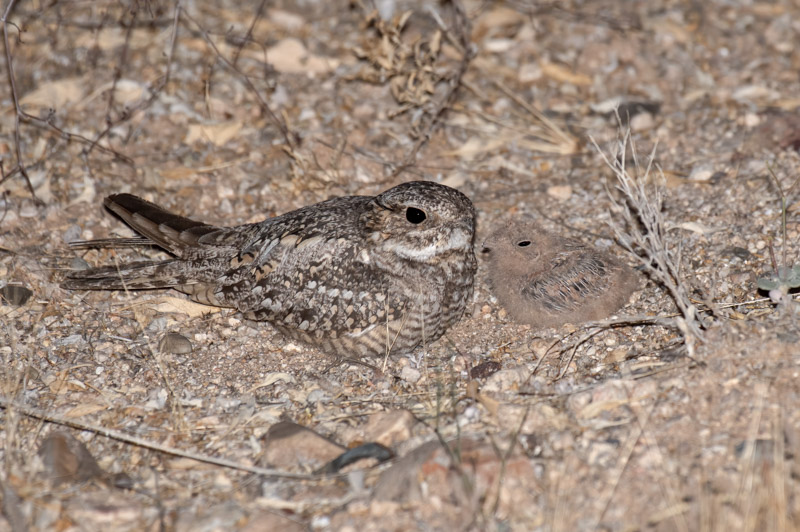
Just as I saw on the the previous evenings, at some point the chick let its parent know that it was hungry and expecting food. It nuzzled its parent and then nipped its mother’s beak. This is another great look at the size of the bird’s mouth.
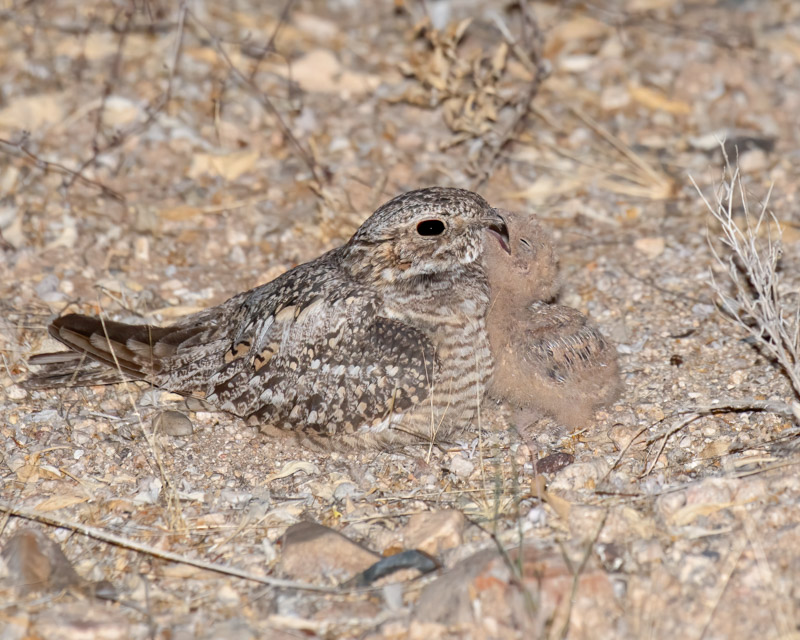
And then quickly the mother bird flew off to join the other parent in finding food for their young. I left but was able to return two nights later. The Lesser Nighthawks were nowhere to be found. After looking over the area for a half hour, my friend walked slowly down the desert path behind the nearby walls. Three houses further, he located the birds who were camouflaged extremely well on the desert floor. After a short while, the mother bird flew behind a nearby bush leaving her chick behind. The chick’s feathers had developed significantly in just two days since it was last observed. But as we watched, we noticed something worrisome.
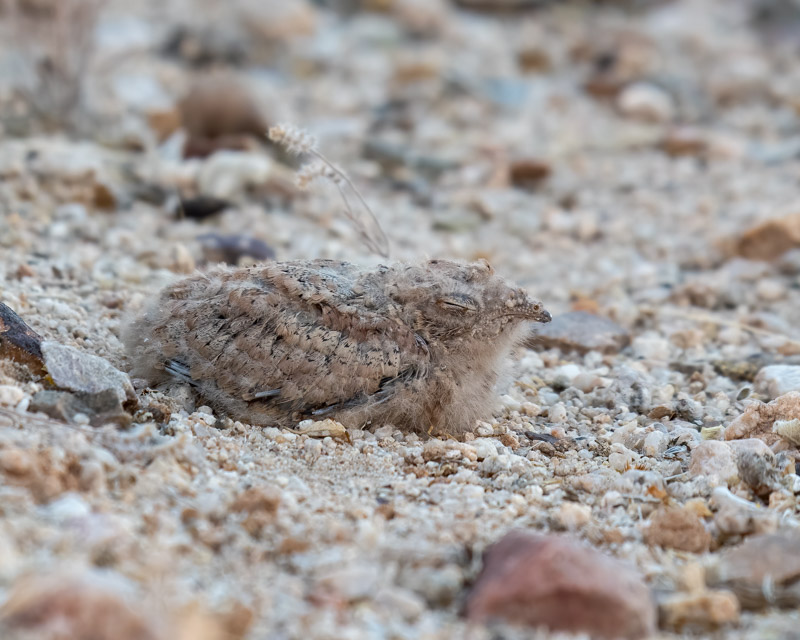
The Lesser Nighthawk chick was either resting on an ant hill, or ants had discovered the bird. She sat still but ants were crawling under and all over her. Occasionally her head would twitch as if to shake them off. This situation did not bode well. My friend got a long, slender weed stalk and gently touched the side of the chick to see if was okay. The chick jumped up and ran towards where its mother had flown, leaving the swarm of ants behind. It ran with its long wings extended upwards and then it came to rest at a spot, stopping with wings extended. You can see the feather growth and the new “pin” feathers growing out. The feather barbs will quickly unfurl from the shaft to become recognizable as “feathers”.
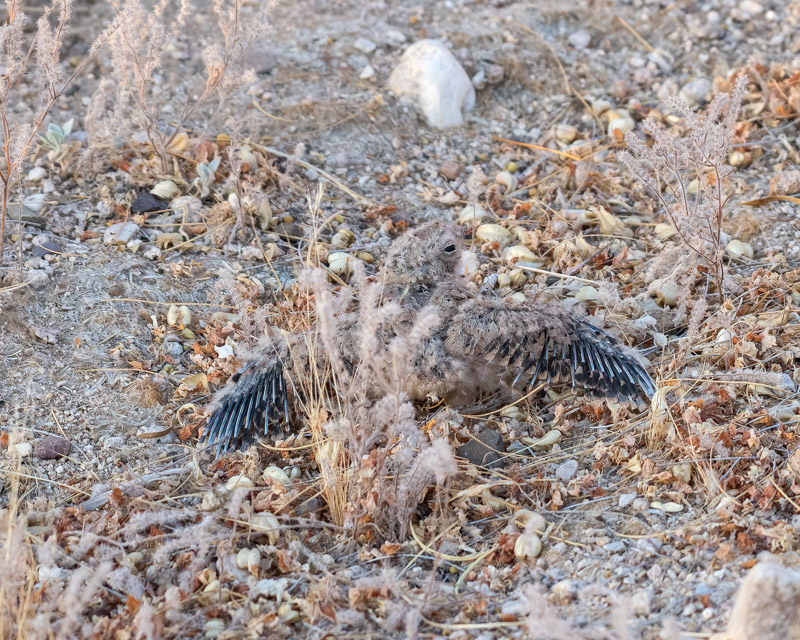
And then, all was well again and the little Lesser Nighthawk closed her eyes and went to sleep again, safe from the ants. In this final shot, you can see that the chick is pretty well feathered and there is little down remaining on its body.
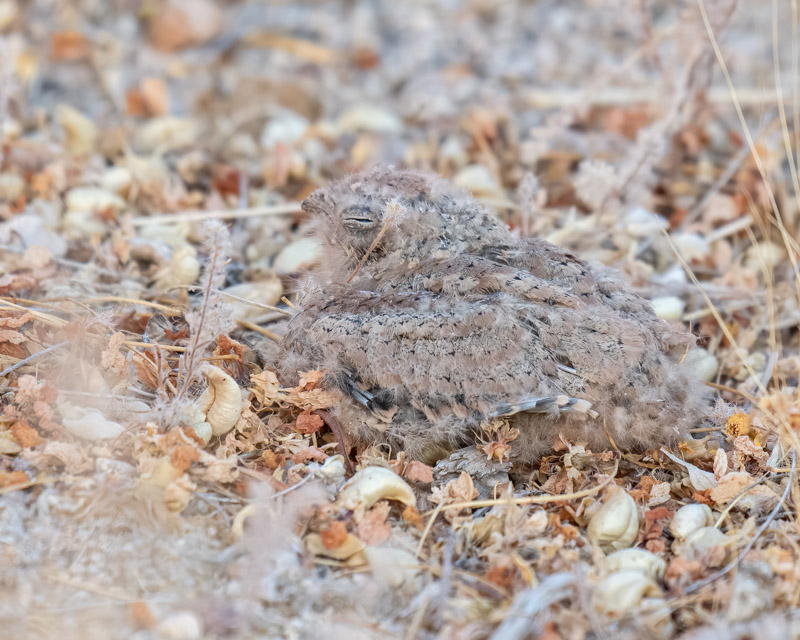
We thought it best to leave then. At this point Lesser Nighthawks may move dozens of yards from one day to the next as the young bird becomes more mobile. It had been easy to observe them when they remained at the same general nest area. Now that they could and would move, it was time for us to say good bye. Some time this week the chick, at 23 days old, will be capable of sustained flight and then will spend time in the air with its parents. I was thrilled to have seen its first two weeks of development and hope that the parents return to this spot next summer to begin a new family.
